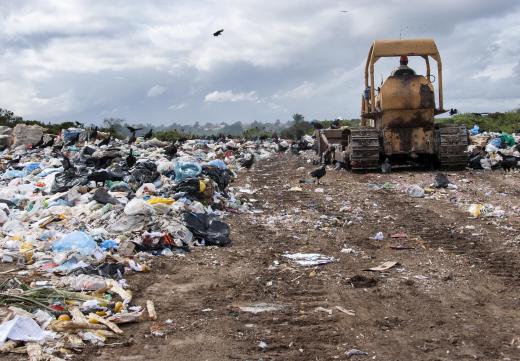Cofiring is a practice in which two or more sources of fuel are burned simultaneously to generate heat or electricity. There are a number of reasons why companies might choose this method over other energy generation techniques, including environmental concerns and fuel quality issues. One of the most common uses of this technique is in a coal/biomass powered plant which uses both coal and biomass as fuel sources. When a plant is administered correctly, efficiency can be very high, and pollution may decrease.
One reason to use this method is the need for better burning fuels. Landfill gas, for example, can be trapped rather than going to waste, except that it does not burn very efficiently or well for energy generation applications. Mixing it with another fuel, a plant can create efficiently produced electricity or heat. Cofiring can also have environmental benefits, as it can reduce reliance on nonrenewable fuels as well as fuels known to be highly polluting, like coal.

In direct cofiring activities, fuels are burned together in a boiler chamber. A technician controls the conditions to increase efficiency and minimize pollution by maintaining adequate inflows of air. Filtration can limit the release of particulates during burning. The waste products can also be utilized in the production of components like cement, depending on what the boiler contains after burning.
The other version of this approach is indirect cofiring, where one fuel is taken through an intermediate stage before it is introduced to the boiler. This can be seen with tools like biomass gasification, which is used to convert certain materials to gases. Biomass on its own is not as clean burning as gasified biomass products, so a company may use a gasifier to create clean, efficient gas for use in the boiler. Several other indirect methods are available for use with a variety of fuels that may need processing or treatment before they are ready for use.
Several governments provide incentives to energy companies that use this practice to generate electricity. The goal is to facilitate cleaner, more independent, more renewable sources of electricity production to meet the needs of the population. Companies can hire energy consultants to assist with the development of a cofiring program. One of the other advantages of this method is that it does not require new plants, as the two fuels can be burned together in an existing facility. Thus, a large investment is not required to switch to cofiring for energy production.
Ever since she began contributing to the site several years ago, Mary has embraced the exciting challenge of being a About Mechanics researcher and writer. Mary has a liberal arts degree from Goddard College and spends her free time reading, cooking, and exploring the great outdoors.

